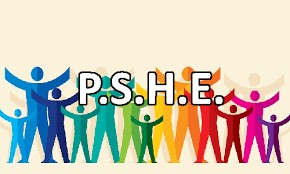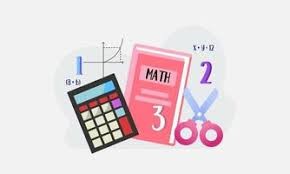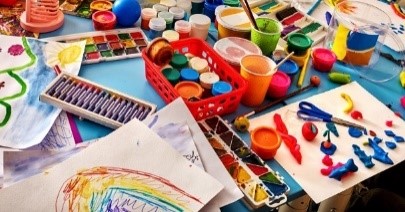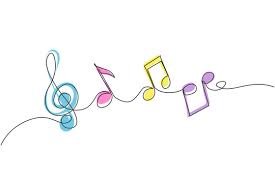
Welcome to our curriculum section. From here, you can find out all about our curriculum rationale and design. You can explore our long-term plans and each subject in more detail.
Bolton Impact Trust – Curriculum Rationale flowchart
Rationale statement
In all Bolton Impact Trust Academies our students are given a curriculum which is specifically designed to meet their needs. We endeavour to use the best available intelligence to help us decide what a pupil’s personal curriculum plan should look like from the varied curriculum menu that we offer. During the design stage, we utilise data and information to define what success looks like for each student. Once the success criteria is established, the personal curriculum plan (pastoral, behavioural, emotional and academic) is agreed with all parties. We will work backwards from the agreed success criteria to create intent.
Using summative and formative assessment methods along with regular review meetings, we regularly analyse pupil progress in all aspects of their personal curriculum plan against the success criteria agreed at the design stage to ensure that their curriculum plan continues to meet their needs.
|
Design |
Referral received Start date agreed if placement appropriate SEMH/Academic baseline assessments Professionals and parents consultation BIT Observations Options taken from curriculum menu Personal Curriculum plans agreed Personal Success criteria agreed
|
Design |
|
Deliver |
High quality teaching and learning experiences Preferred learning styles understood Strong Core Curriculum Reading as an integral part of the diet Personal Development at the heart of the offer Time given to breaking down barriers to success |
Deliver |
|
Decide |
Personal success data analysed
|
Decide |
|
|
If sustained success is achieved
More challenge applied New success criteria set Regular analysis of performance Present evidence to Commissioners Return to mainstream setting or move on to long-term specialist provision. Support Transition |
If sustained success isn’t achieved
New success criteria set (re-design) New strategies introduced Procure more specialist support Review with all stakeholders Possible EHCP review Possible move to specialist setting |
||
Rationale
The Forwards Centre curriculum supports pupils who may have missed significant parts of their education and who may have had a negative experience of learning which has badly affected both their academic self-worth and understanding of their place in society. It is designed to address gaps in both learning and the personal, social and emotional skills in order that children may go on to be successful in the next stage of their educational journey. It is founded in the centre’s core values of Believe, Inspire and Transform.
We believe in all our children and our curriculum is designed to enable all pupils to experience academic success so that each child also develops belief in themselves over time. We provide a curriculum that is realistic, achievable, relevant and accessible to all. An ambitious curriculum that is carefully planned and personalised to promote feelings of trust, safety and self-confidence.
Curriculum Design
We provide a curriculum structure that is clear and has well-defined end points. The structure allows rigorous baseline assessments to inform the planning of an appropriate curriculum ‘climbing frame’ for each child. Our curriculum then allows children the time and space to climb from a point and at a pace that is right for them and experience the same joy of learning new things that others experience and should be part of every child’s life. It is designed so that we can use ongoing formative assessment to track each child’s individual progress, treat them as individuals and celebrate their progress on its own merit rather than simply comparing with whole class age related expectations. This individualised approach ensures that no children are disadvantaged due to their academic level, SEND need or what point on their educational journey they are at or what time in the year they arrive. Every child can experience success.
The Forwards Centre has a two-year rolling programme including reading, writing, maths, science, history, geography, computing, art and music alongside working on an individual basis with each pupils on the personal, social and emotional skills needed to overcome personal barriers to being successful in life. Each child has a personal provision map based on the end points from their education and health care plans (EHCPs) or from advice from a range of professionals such as educational psychologists and occupational therapists.
Through our ‘Forwards Centre Five’, we ensure that the curriculum goes beyond the academic and that personal development is woven throughout. The ‘Five’ include: Contribution and Readiness; Conduct and Morals; Celebrating Similarity and Difference; Caring for Ourselves; and Culture and Creativity. We encourage children to try new things, find a spark and then develop it into an area of strength and success. This provides opportunities for pupils to develop character, confidence and self-esteem with the aim of providing them with the essential knowledge and cultural capital that they need to be educated citizens and develop a fully rounded appreciation of the world around them.
Our centre runs on a clear set of published SEMH principles designed to create a therapeutic, emotionally regulated environment where children experience and learn the social norms and expectations they will need to be successful in their next setting. Staff live life alongside each child and consistently model positive ways of coping with the challenges that the school day brings.
The curriculum has been planned and sequenced so that knowledge and skills build on what has been taught before. It has clear end points for each subject with clearly defined “I know’ and ‘I can’ statements’ defining the knowledge and skills children need to acquire to reach those end point. There is a focus on the ‘sticky knowledge’ we want children to remember and an emphasis on the use of technical language and vocabulary for each subject. Every pupil is entitled to study the full curriculum and develop the knowledge and skills they need to be successful in their next educational setting.
Our experienced staff have the flexibility to further adapt our curriculum for each child to better meet their SEND needs or to take advantage of their specific interests. This may mean adapting the pitch of a learning activity but may also mean adapting the pace of the lesson, introducing sensory breaks or breaking activities down into small steps in order that a child does not feel overwhelmed. Over time, children may need less adaptation, however, staff are vigilant and recognise that pupils face multiple challenges in their lives and sometimes need more support and adaptation and sometimes less.
Reading
Reading is a priority for children at the Forwards Centre with each child being thoroughly assessed on arrival. PM Benchmarking is used to ensure a rigorous and sequential approach to developing fluency and confidence in reading. Our pupils access the PM Benchmarking reading scheme and reading is assessed regularly and every pupil has individual targets to ensure any gaps are addressed and that books are chosen to closely match their next steps. Time is allocated for reading and all pupils have 1:1 reading sessions with staff where they work on their personal reading targets which may include comprehension at a level that appropriate to them.
Where appropriate, pupils are phonically assessed on arrival at the centre and for our youngest children, and those at the early stages of reading, our focus is on the development of the phonics, language comprehension and communication skills they need to be successful learners. Children who are still at the early stages of their reading journey have access to books that are in line with their phonetical knowledge. The centre uses the DfE validated Twinkl phonics scheme and, through the development of the “Twinkle Toes’ programme, implements it in a way that is particularly effective for meeting the needs of pupils with SEMH needs in an AP setting.
The documents in this section of the website outline the two-year curriculum programme for each of our classes. For more information, please contact your child's class teacher or Mrs Berry (Deputy Headteacher) - 01204 333660.
Forwards Centre Whole School Curriculum
 At the Forwards Centre, we want our children to be inquisitive about the world around them. We want to embrace their sense of wonder about natural phenomena and inspire them to think scientifically about the world around them.
At the Forwards Centre, we want our children to be inquisitive about the world around them. We want to embrace their sense of wonder about natural phenomena and inspire them to think scientifically about the world around them.
We aim to develop children’s ideas and ways of working that enable them to make sense of the world in which they live.
We want our children to develop an understanding of the uses and implications of science, how it has changed and shaped our lives today and for the future.
We guide our children and support them using the Bolton Impact Trusts core values of ‘Believe’, ‘Inspire’, ‘Transform’.
We ‘believe’ in our children and their capability in understanding the specific substantive knowledge for each discipline of the Science National Curriculum. We have high expectations of our children and believe that all children will achieve regardless of their starting point.
We aim to ‘inspire’ our children about the scientific world, ensuring that they use those crucial disciplinary skills alongside their substantive knowledge to ensure cohesion, reasoning and a deeper understanding.
We help to ‘transform’ our children to become life longer learners, who want to know more about the world in which they live
Forwards Centre Curriculum Science
 At The Forwards Centre we recognise the importance and value that a high quality PSHE & Relationship Education curriculum can offer our pupils. Our aim is to enable pupils to develop the knowledge, skills and attributes they need to manage their lives now and to help prepare and equip them for their future, enabling them to play a full and active part in society, whilst keeping themselves healthy and safe. Many of the children in our care, have been exposed to multiple forms of adverse childhood experiences within their personal lives and as such, we believe that PSHE is key to helping pupils to develop the knowledge, skills and attributes they need to manage their lives, now and in the future. We want all of our pupils to be equipped to navigate their way through the stresses, pressures and influences on their lives and to know how to stay healthy and safe. We will help them to develop their emotional literacy and positive mental health, to find their own voice and to have autonomy in their life and in their choices.
At The Forwards Centre we recognise the importance and value that a high quality PSHE & Relationship Education curriculum can offer our pupils. Our aim is to enable pupils to develop the knowledge, skills and attributes they need to manage their lives now and to help prepare and equip them for their future, enabling them to play a full and active part in society, whilst keeping themselves healthy and safe. Many of the children in our care, have been exposed to multiple forms of adverse childhood experiences within their personal lives and as such, we believe that PSHE is key to helping pupils to develop the knowledge, skills and attributes they need to manage their lives, now and in the future. We want all of our pupils to be equipped to navigate their way through the stresses, pressures and influences on their lives and to know how to stay healthy and safe. We will help them to develop their emotional literacy and positive mental health, to find their own voice and to have autonomy in their life and in their choices.
Forwards Centre Curriculum PSHE/RSE
 At The Forwards Centre, we recognise the importance of children receiving a high-quality maths education, as maths is “a universal language that enables understanding of the world” and “attainment in the subject is the key to opening doors”. We believe that every child can be successful in maths regardless of their starting point. The vast majority of our pupils have missed out on learning at some point in the past for a wide range of reasons. Our curriculum takes this into account and is personalised, flexible and designed to allow pupils to build self-confidence and re-engage with learning.
At The Forwards Centre, we recognise the importance of children receiving a high-quality maths education, as maths is “a universal language that enables understanding of the world” and “attainment in the subject is the key to opening doors”. We believe that every child can be successful in maths regardless of their starting point. The vast majority of our pupils have missed out on learning at some point in the past for a wide range of reasons. Our curriculum takes this into account and is personalised, flexible and designed to allow pupils to build self-confidence and re-engage with learning.
Forwards Centre Curriculum Maths
History is important as all around us; it helps to ignite curiosity about the past in Britain and the wider world. Through finding out about how and why the world, our country, culture and local community have developed over time, pupils understand how the past influences the present.
community have developed over time, pupils understand how the past influences the present.
History enables pupils to develop a context for their growing sense of identity and a chronological framework for their knowledge of significant events and people. It allows an understanding of their place in the world and in the long story of human development.
At The Forwards Centre our aim is to deliver a history curriculum that stimulates, motivates and engages pupils who may have missed significant parts of their education and who may have had a negative experience of learning, in order for them to develop their knowledge, skills and understanding of the world around them. We want to enable all pupils to experience academic success - ensuring that no child is disadvantaged due to their academic level, SEND need or what point on their educational journey they are at or what time in the year they arrive, by having a “climbing frame” to achieve clear ambitious end points
Forwards Centre Curriculum History
At The Forwards Centre, we believe that geography is, by nature, an investigative subject, which helps children to develop a greater understanding and knowledge of the world by provoking and providing answers to questions.jpg) about the world around us as well as our place in it. We seek to inspire in children a curiosity and fascination about the world and its people which will remain with them for the rest of their lives; to promote the children’s interest and understanding of diverse places, people, resources and natural and human environments, together with a deep understanding of the Earth’s key physical and human processes. The curriculum is designed to develop knowledge and skills that are progressive, as well as transferable, equipping pupils well for further education and beyond.
about the world around us as well as our place in it. We seek to inspire in children a curiosity and fascination about the world and its people which will remain with them for the rest of their lives; to promote the children’s interest and understanding of diverse places, people, resources and natural and human environments, together with a deep understanding of the Earth’s key physical and human processes. The curriculum is designed to develop knowledge and skills that are progressive, as well as transferable, equipping pupils well for further education and beyond.
Forwards Centre Curriculum Geography
 At The Forwards Centre our curriculum supports pupils who may have missed significant parts of their education. As a result, the Forwards Centre provides a focused learning journey starting with the fundamentals of reading. Our aim is to deliver a flexible reading model that can provide our learners with the keys to unlock their full potential in life.
At The Forwards Centre our curriculum supports pupils who may have missed significant parts of their education. As a result, the Forwards Centre provides a focused learning journey starting with the fundamentals of reading. Our aim is to deliver a flexible reading model that can provide our learners with the keys to unlock their full potential in life.
We strive to encourage and promote a genuine love and interest of reading at the Forwards Centre, therefore, time in the day will be made for pupils to read independently or with a staff member. As a priority, we will develop confidence and motivation in our readers, which is anchored by regular opportunities to hear high quality non-fiction and fiction texts. The cross curricular vocabulary we teach, aims to provide our pupils with a greater understanding of the world around them and their ability to express themselves effectively.
We deliver engaging, cross curricular topics, so our pupils can write with purpose. As a result, we expose pupils to high quality non-fiction and fiction texts, whilst teaching the different genres of writing. Lessons are carefully sequenced to cover the key features of each genre so that skills can be gradually embedded and built upon progressively,
We want to instil a feeling of pride in our pupils writing, so we schedule time each day for handwriting practice, and give our pupils chances to express themselves by planning, editing and publishing their own work. Our ethos is to create a culture that challenges children to improve their writing, whilst developing a safe learning environment for children to work at their own pace.
At the Forwards Centre we believe that teaching handwriting is important because it helps our pupils to develop their fine motor skills, to communicate clearly, to improve their reading and spelling and to reduce cognitive load when composing a piece of writing. We know that repeated practice in handwriting is necessary for pupils to become fluent and legible writers, and research shows us that repeated practice in handwriting leads to success in higher-level writing tasks. We also know that pupils develop a sense of satisfaction when their writing is presented well and that in turn builds confidence, self-esteem and the motivation to write.
At the Forwards Centre we believe that teaching spelling is important because it helps our pupils to communicate clearly, to improve their reading and to enable them to write fluently. We know that our phonics work provides an effective foundation for teaching spelling and that teaching spelling is most effective when done through the current content that the pupils are learning.
At the Forwards Centre, we want our pupils to build the cultural capital they need to interconnect with society; therefore, it is our aim to teach a range of new words to our pupils. We want our pupils to have social mobility, and have the vocabulary to talk about their own writing with their friends and family. Ultimately, we want our pupils to generate long lasting life skills and work towards becoming confident, independent writers
Forwards Centre Curriculum English
At The Forwards Centre, we want to prepare pupils for a life in a continually changing digital and technological society. Technology is everywhere and plays a pivotal role, and will continue to do so, in our students’ lives.  This means it is important we provide them with the skills to develop in a digital world.
This means it is important we provide them with the skills to develop in a digital world.
Forwards Centre Curriculum Computing
 At The Forwards Centre, we see art as a vehicle for creativity and individual expression. We believe that it is important to the development of pupils’ well-being, appreciation of the world and understanding and empathy of others.
At The Forwards Centre, we see art as a vehicle for creativity and individual expression. We believe that it is important to the development of pupils’ well-being, appreciation of the world and understanding and empathy of others.
We aim to give all children the confidence to express themselves through a range of chosen mediums. Our curriculum provides children with an opportunity to experience different art forms: drawing, painting and 3D designs, and pupils are encouraged to experiment with a range of different materials and techniques.
We aim to equip children with the skills required to have an understanding of the language of art in order to enable them look at an image or a piece of art and to have an understanding of it, not just react to it; to describe what they see in detail and to provide evidence for their observations.
Forwards Centre Curriculum Art
 Music Rationale
Music Rationale
At The Forwards Centre, we believe that music can be a powerful and transformational tool for children; it can both engage and inspire, assist emotional regulation and facilitate therapeutic self-expression in a profound way.
Music Curriculum Design
Our music curriculum aims to promote the enthusiasm for, and the enjoyment of, music in all its forms. Our goal is for the children to develop musical skills and knowledge through effective teaching where children are fully engaged in their learning. By engaging children in musical experiences, we offer our children opportunities to develop skills, attitudes and attributes that can support learning in other curriculum areas as well as developing life skills such as listening, the ability to concentrate, creativity, self-confidence and a sensitivity towards others and the environment.
Forwards Centre Music Intent
Personal Development Rationale
Supporting the personal development of pupils is a core part of the Forwards Centre’s work. Our intent is to support pupils to grow into healthy, confident, resilient adults who can make a positive contribution to society and be prepared for life in modern Britain. To that end, teachers use opportunities presented by the Forwards Centre curriculum to promote both the Spiritual, Moral, Social and Cultural aspect of pupils’ lives and their understanding Fundamental British Values. Opportunities to support each child to develop their character are identified and they are given the opportunity to try lots of new things. Children are taught about helping others to and preparing for the next stage in their education. They are taught to recognise the difference between right and wrong and how this impacts on their own life and on the lives of the others. Opportunities are sought to celebrate similarities, be respectful of our differences and how to keep safe and healthy. Children are supported to develop an appreciation of human creativity and achievement, develop their own skills as artists and musicians and develop the cultural capital they need to go on be successful.
Forwards Centre Curriculum Personal Development
If parents or carers wish to find out more about the curriculum please contact the Academy Lead